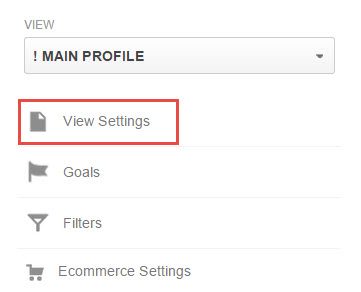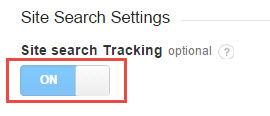For websites which lets users access their content based on search queries, it is extremely important to properly configure the site search query parameters in order to detect the exact search queries which the users are entering to locate the content. This post will share the steps that will help you to easily configure site search on your website.
Sites That Desperately Need Site Search Data
Site search data may not be useful for static sites of a few pages because users may not feel the need to search anything particular on the site due to the presence of limited information. But, in the case of large dynamic sites, it become absolutely necessary to track the site search queries in order to serve the users well. Some types of sites where this kind of tracking becomes essential are as follows:
1- Search Engines - Major search engines like Google, Yahoo, Bing, Baidu, Yandex etc rely extensively on the site search data in order to identify search queries which the users are entering. Imagine a scenario when Google is unable to determine the type of queries entered by the users, will it be able to serve its users in a manner it is serving today? That would have been a major headache.
2- Song Download Sites or Music Search Engines- Popular music and songs download sites like mp3, MP3olimp, last.fm etc need to know more about the search queries the music enthusiasts are entering to find and download their favorite songs. User performance is improved if the site regularly adds new songs based on the search queries it is receiving.
3- Software Download Sites - Similar to song downloading sites, software downloading sites like filehippo and cnet too need access to this data in order to add more softwares on their database that caters to the demand of their users. It is a great way to learn about the new software downloads which the users are interested in.
4- Online Shopping Sites - Shopping portals are making business in an extremely competitive space. The business owners desperately need the data about products which the users are interested in purchasing. This data can easily be made available to them by making use of the site search features provided for free by Google Analytics.
Query Parameters
Whenever the user performs a search, the query is passed on to the URL. It is normally preceded by the letter "q" or for some sites it can be "query". For example in the URL given below, the query is website design and the query parameter is "q".
https://www.google.com?hl=en&q=website+design
Similarly, you need to identify your site's query parameter before proceeding to the configuration section.
How to Configure Site Search in Analytics?
To set up Site Search for a view, follow the below steps:
1- Log into Analytics and click on the Admin tab.
2- Under All Web Site Data click on View Settings.

3- By default, the site search tracking feature is OFF, change it to ON.

4- Specify your website's query parameter and click on save.
That's all. Once you save the changes under Analytics, Google will start tracking the internal site search queries and you can view these queries under the Behavior tab. The important metrics defined by Google that gets displayed in the site search dashboard are given below:
1- Sessions with Search = The total number of sessions that included your site's search function.
2- Total Unique Searches = Similar to the first one but this will ignore the same session keyword searches and display only the unique sessions.
3- Percentage of sessions that used internal search = Calculated by dividing Sessions with Search by Total Sessions
4- Percentage of Search Exits = Calculated by dividing Search Exits by Sessions with Search.
5- Search Exits = Total number of searches made immediately before leaving the site.
Please note that it may take around 48 hours for the data to get reflected in Google Analytics so have a little patience.
Hence, site search configuration is really important for those sites who wish to get access to this hidden data of search queries.
